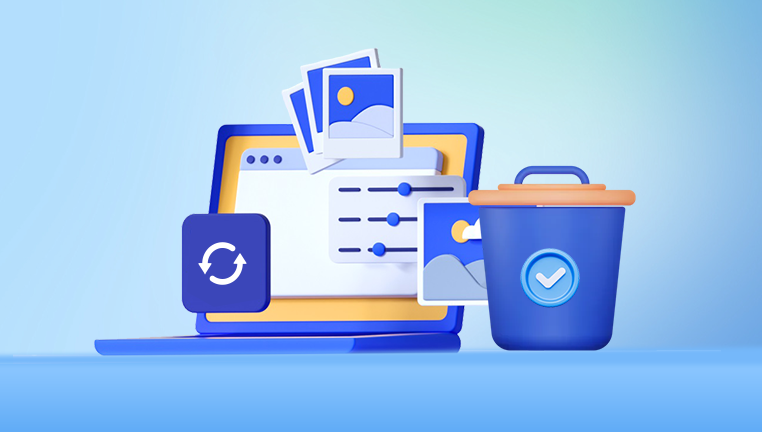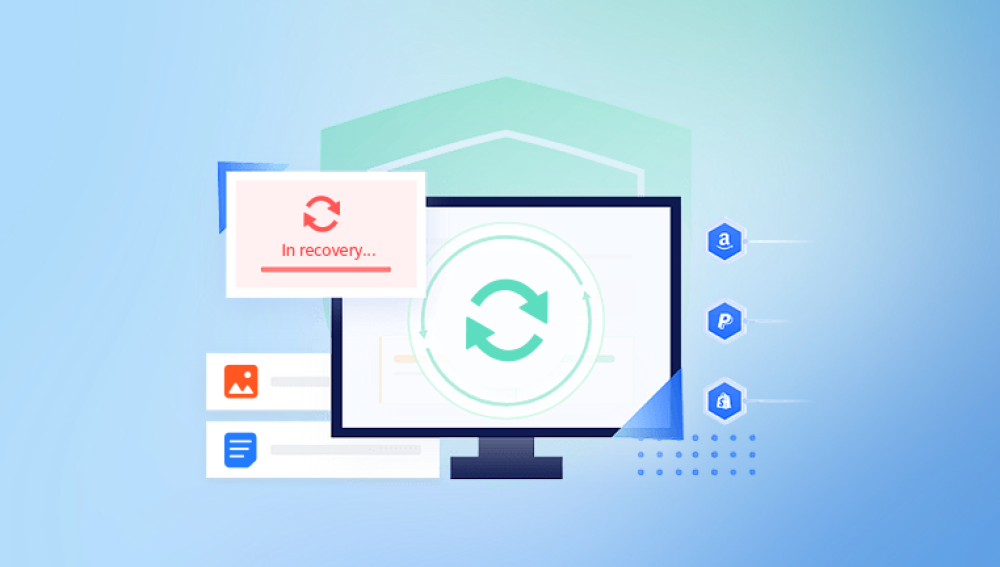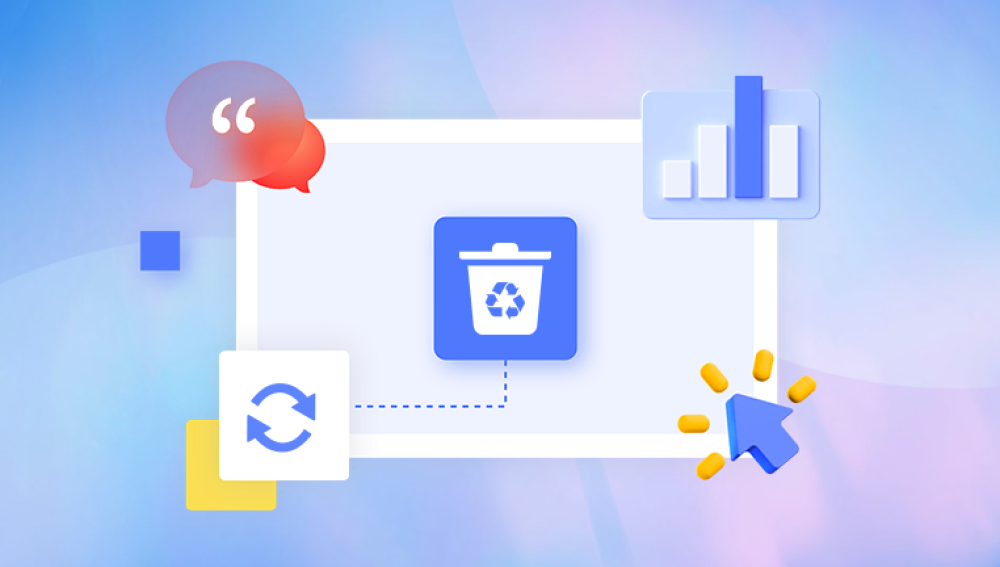Thankfully, emptied Recycle Bin files are not always lost forever. Specialized data recovery software can retrieve files even after the Recycle Bin has been cleared. This guide covers everything you need to know about Recycle Bin data recovery software: how it works, why deleted files can be recovered, the best free and paid tools, and step-by-step recovery instructions.
What Happens When You Empty the Recycle Bin?
When you delete a file from your Windows PC, it doesn’t get erased immediately. Instead, it goes to the Recycle Bin—a temporary storage area. As long as it's in there, you can right-click and restore it with ease. However, once the Recycle Bin is emptied, those files are no longer visible or accessible from Windows.

But here's the good news: emptying the Recycle Bin doesn’t actually erase your files from the drive. The operating system simply marks the space where those files were stored as “available,” meaning the data still exists until it gets overwritten by new data. Recovery software takes advantage of this gap by scanning the free space and reconstructing the deleted files.
Why File Recovery Is Possible After Emptying the Recycle Bin
Modern file systems like NTFS (used by Windows) manage data through references. When a file is deleted, its reference in the system directory is removed, but the actual file content remains on the disk. Until that space is used for something else—such as saving a new file—there’s still a chance to recover the deleted item.
This is why it’s crucial to avoid using your computer for saving or downloading new data immediately after realizing you've emptied the Recycle Bin. The more activity that occurs, the higher the chance that the deleted data will be overwritten and lost permanently.
When Recycle Bin Recovery Software Is Needed
Here are common scenarios where recovery software becomes necessary:
You emptied the Recycle Bin without realizing it contained important files
You used Shift + Delete to remove files directly, bypassing the Recycle Bin
You deleted files from an external drive (which skips the Recycle Bin by default)
The Recycle Bin was auto-cleared by a cleanup utility or due to storage limits
Files were deleted from a shared or network drive (which doesn’t use the Recycle Bin)
In all these cases, if the storage space hasn’t been overwritten, data recovery software can help restore your lost files.
Features to Look for in Recycle Bin Recovery Software
The market is full of recovery tools, but not all are created equal. Here’s what to consider when choosing a reliable option:
1. Deep Scan Mode
Deep scan examines the entire drive sector by sector, enabling recovery of files that have lost their directory structure or metadata.
2. File Type Support
The best tools support a wide variety of file formats—documents, images, audio, video, archives, system files, and more.
3. Preview Feature
Being able to preview files before recovering them allows you to confirm which files are intact and worth restoring.
4. Read-Only Recovery
The software should not write to the affected drive during recovery to avoid overwriting more data.
5. File Sorting and Filtering
Filtering files by size, date, or file type can speed up the recovery process and help locate specific items.
6. Multiple Device Support
The ability to recover from hard drives, SSDs, external drives, USB flash drives, and SD cards is a major plus.
7. Clean Interface
User-friendly design makes a huge difference, especially if you're not tech-savvy.
Best Recycle Bin Data Recovery Software
Here’s a look at some of the most trusted and effective recovery tools available today, both free and paid.
1. Drecov Data Recovery
Drecov Data Recovery is an intuitive and robust tool designed to recover files lost through accidental deletion, formatting, and system crashes—including files emptied from the Recycle Bin. It offers both quick and deep scans, supports multiple file types and systems (NTFS, FAT32. exFAT), and is available for Windows and macOS.
The free version lets users scan and preview files, while the full version includes unlimited recovery and technical support.
Highlights:
Beginner-friendly interface
Secure read-only recovery
Works on internal and external storage
Efficient deep scanning
2. Recuva
Recuva is a lightweight and powerful recovery tool from the creators of CCleaner. It’s ideal for recovering files from emptied Recycle Bins, formatted drives, or corrupted partitions. Recuva includes a file recovery wizard for beginners and an advanced mode for more experienced users.
Highlights:
100% free for personal use
Supports deep scan
File status indicators (Excellent, Poor, Unrecoverable)
Preview images and documents before recovery
3. EaseUS Data Recovery Wizard
EaseUS offers a free version with up to 2GB of recoverable data and is known for its high success rate and ease of use. It allows you to recover deleted files from Recycle Bins, partitions, RAW drives, and more. It features a simple three-step recovery process: select, scan, and recover.
Highlights:
Intuitive interface for all skill levels
Filter by file type and scan status
Reliable for documents, images, videos
Preview before recovery
4. Disk Drill
Disk Drill is known for its polished interface and powerful scanning capabilities. Its free Windows version offers 500MB of recovery, while macOS users can preview recoverable files but must upgrade to restore them. Disk Drill supports hundreds of file formats and even creates recovery vaults to prevent future data loss.
Highlights:
Supports file systems: NTFS, FAT32. exFAT, HFS+, APFS
Excellent file preview options
Modern and responsive design
Extra tools like partition recovery and data backup
5. PhotoRec
PhotoRec is a free and open-source file recovery tool that works on Windows, macOS, and Linux. Although it lacks a user-friendly interface (it's command-line-based), it is highly effective at recovering files even from corrupted drives and partitions.
Highlights:
100% free with no limits
Powerful file signature-based recovery
Ideal for tech-savvy users
Can recover from damaged or formatted drives
6. Windows File Recovery (Microsoft Tool)
This is a command-line tool available in the Microsoft Store for Windows 10 and newer. It can recover deleted files from local hard drives, including Recycle Bin data, but it requires familiarity with command-line operations.
Highlights:
Free and built by Microsoft
Multiple recovery modes (Default, Segment, Signature)
Supports NTFS, FAT, and exFAT
Great for advanced users
Step-by-Step Guide: How to Recover Files from Emptied Recycle Bin
Using any of the above software tools generally follows a similar process. Here's a general guide:
Step 1: Stop Using the Drive
Once you realize you've emptied the Recycle Bin, do not save new files, download software, or update your system. This helps preserve the deleted data in memory.
Step 2: Install Recovery Software
Download and install recovery software—but not on the same drive where your deleted files were stored. Use a different partition or external drive if possible.
Step 3: Launch the Software and Select the Drive
Most tools will ask you to select a location. Choose your system’s main drive (typically C:) or the drive from which the files were deleted.
Step 4: Choose a Scan Mode
Start with a quick scan if the deletion is recent. If no results appear or files are incomplete, switch to a deep scan.
Step 5: Preview and Filter Files
After the scan, filter results by file type, size, or modification date. Use the preview feature to check file integrity.
Step 6: Select and Recover
Choose the files you want to recover and select a different location to save them to. Saving to the same location could overwrite other recoverable files.
Pro Tips for Higher Recovery Success
Act Fast: The sooner you run recovery software, the more likely your files are intact.
Avoid Defragmentation: Don’t defragment your hard drive—it overwrites file sectors.
Use Deep Scan for Formatted Drives: If your drive has been formatted or the Recycle Bin was auto-emptied long ago, deep scan is your best option.
Recover in Batches: If you find many files, restore them in small batches. This makes organizing them easier later.
Situations Where Recovery May Not Work
Despite the power of recovery software, there are limits. Some scenarios where recovery may be unsuccessful include:
Files are overwritten by new data
The drive is physically damaged and no longer readable
Solid-state drives (SSDs) with TRIM enabled may instantly delete data on removal
Files were securely deleted or shredded using special erasure tools
In these cases, professional recovery services may be your last resort.
When to Seek Professional Help
Professional data recovery labs use specialized equipment and cleanroom environments to handle physically damaged drives or advanced logical issues. This route is expensive but may be necessary when:
Your drive makes clicking or grinding noises
The drive is not detected at all by your system
You’ve tried multiple software tools without success
The files are mission-critical and irreplaceable
Look for a service with a no-recovery, no-fee policy and experience handling your type of device or file format.
How to Prevent Future Data Loss from the Recycle Bin
While recovery tools are helpful, prevention is the best strategy. Here are ways to avoid losing files from the Recycle Bin in the future:
1. Use Cloud Backups
Sync your important folders to cloud services like OneDrive, Google Drive, or Dropbox. These services offer file versioning and trash folders that can retain deleted files for weeks or months.
2. Increase Recycle Bin Storage Size
By default, the Recycle Bin can only store a small amount of data. You can increase its size so it retains more deleted files before permanent removal.
3. Disable Auto-Delete Tools
Avoid using system cleaners or optimizers that auto-empty the Recycle Bin. Customize their settings to keep deleted files longer.
4. Set Up File History or System Restore
Windows File History allows automatic backups of your files. You can also create system restore points to protect system files.
5. Double-Check Before Emptying the Bin
Before clearing the Recycle Bin, scroll through its contents to make sure no important files are hidden among junk items.
Final Thoughts
Emptying the Recycle Bin doesn’t mean your files are gone forever. Thanks to modern Recycle Bin data recovery software, restoring those files is entirely possible—especially if you act quickly and avoid writing new data to the affected drive.
From powerful free tools like Recuva and Drecov Data Recovery to professional-grade solutions like EaseUS and Disk Drill, there’s a recovery tool for every situation and skill level. These programs offer hope in what seems like a hopeless situation, and often, they work better than expected.




